|
Return to Essential Skills
NVC Non-Violent
Communication

Asking for what you need in
an effective way.
By Marshall Rosenberg
Summary
of the STEPS
- Describe the situation
objectively. Use non judgmental language. Give an accurate description of it
without evaluation and judgment. What's going on?
- Identify what feelings arise
in the situation. What are you feeling? Often people don’t know what they are feeling. Learning
the language of feelings is a skill.
- State the feelings this way:
I feel____________ because I “need”…We may be stumped to understand what we
need in that moment. (Use the Daily check-in). State: "I have this feeling because I
have this need…."
- Make a request to the other
person and ask them to help me. “Would you mind doing….” Don’t make a demand
(they can still say “no”).
This section is taken from the NVC
website.
 
Nonviolent Communication (NVC) is sometimes referred to as compassionate
communication. Its purpose is to:
1. Create human connections that empower compassionate giving and receiving
2. Create governmental and corporate structures that support compassionate giving
and receiving.
NVC involves both communication skills that foster compassionate relating and
consciousness of the interdependence of our well being and using power with
others to work together to meet the needs of all concerned.
This approach to communication emphasizes compassion as the motivation for
action rather than fear, guilt, shame, blame, coercion, threat or justification
for punishment. In other words, it is about getting what you want for reasons
you will not regret later. NVC is NOT about getting people to do what we want.
It is about creating a quality of connection that gets everyone’s needs met
through compassionate giving.
The process of NVC encourages us to focus on what we and others are observing
separate from our interpretations and judgments, to connect our thoughts and
feelings to underlying human needs/values (e.g. protection, support, love), and
to be clear about what we would like towards meeting those needs.
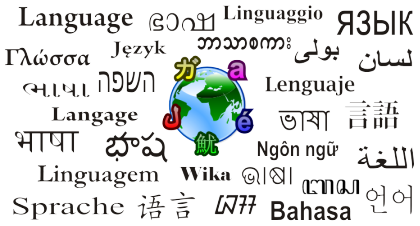
These skills
give the ability to translate from a language of criticism, blame, and demand
into a language of human needs -- a language of life that consciously connects
us to the universal qualities “alive in us” that sustain and enrich our well
being, and focuses our attention on what actions we could take to manifest these
qualities.
Nonviolent Communication skills will assist you in dealing with major blocks to
communication such as demands, diagnoses and blaming. In CNVC trainings you will
learn to express yourself honestly without attacking. This will help minimize
the likelihood of facing defensive reactions in others. The skills will help you
make clear requests. They will help you receive critical and hostile messages
without taking them personally, giving in, or losing self-esteem. These skills
are useful with family, friends, students, subordinates, supervisors, co-workers
and clients, as well as with your own internal dialogues.
Nonviolent Communication Skills
The STEPS:
NVC offers practical, concrete skills for manifesting the purpose of creating
connections of compassionate giving and receiving based in a consciousness of
interdependence and power with others. These skills include:
1.
Differentiating observation from evaluation, being able to carefully observe
what is happening free of evaluation, and to specify behaviors and conditions
that are affecting us;
2. Differentiating feeling from thinking, being able to identify and express
internal feeling states in a way that does not imply judgment, criticism, or
blame/punishment;
3. Connecting with the universal human needs/values
(e.g. sustenance, trust,
understanding) in us that are being met or not met in relation to what is
happening and how we are feeling; and
4. Requesting what we would like in a way that clearly and specifically states what
we do want (rather than what we don’t want), and that is truly a request and not
a demand (i.e. attempting to motivate, however subtly, out of fear, guilt,
shame, obligation, etc. rather than out of willingness and compassionate
giving).
These skills emphasize personal responsibility for our actions and the choices
we make when we respond to others, as well as how to contribute to relationships
based in cooperation and collaboration.
With NVC we learn to hear our own deeper needs and those of others, and to
identify and clearly articulate what “is alive in us”. When we focus on
clarifying what is being observed, felt, needed, and wanted, rather than on
diagnosing and judging, we discover the depth of our own compassion. Through its
emphasis on deep listening—to ourselves as well as others—NVC fosters respect,
attentiveness and empathy, and engenders a mutual desire to give from the heart.
The form is simple, yet powerfully transformative.
Founded on consciousness, language, communication skills, and use of power that
enable us to remain human, even under trying conditions, Nonviolent
Communication contains nothing new: all that has been integrated into NVC has
been known for centuries. The intent is to remind us about what we already
know—about how we humans were meant to relate to one another—and to assist us in
living in a way that concretely manifests this knowledge.
The use of NVC does not require that the persons with whom we are communicating
be literate in NVC or even motivated to relate to us compassionately. If we stay
with the principles of NVC, with the sole intention to give and receive
compassionately, and do everything we can to let others know this is our only
motive, they will join us in the process and eventually we will be able to
respond compassionately to one another. While this may not happen quickly, it is
our experience that compassion inevitably blossoms when we stay true to the
principles and process of Nonviolent Communication.
NVC is a clear and effective
model
for communicating in a way that is cooperative conscious, and compassionate.
Adapted from:
Nonviolent Communication: A Language of Life
by Marshall B. Rosenberg, Ph.D.
Published by PuddleDancer Press,
available from CNVC
Feelings inventory
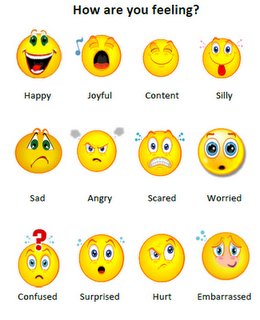 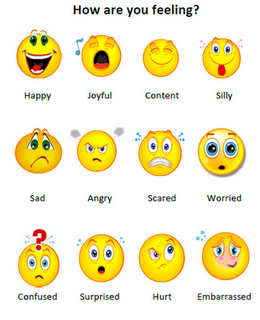
The following are words we use when we want
to express a combination of emotional states
and physical sensations. This list is
neither exhaustive nor definitive. It is
meant as a starting place to support anyone
who wishes to engage in a process of
deepening self-discovery and to facilitate
greater understanding and connection between
people.
There are two parts to this list: feelings
we may have when our needs are being met and
feelings we may have when our needs are not
being met.
Feelings when your needs are
satisfied
|
AFFECTIONATE
compassionate
friendly
loving
open hearted
sympathetic
tender
warm
ENGAGED
absorbed
alert
curious
engrossed
enchanted
entranced
fascinated
interested
intrigued
involved
spellbound
stimulated
HOPEFUL
expectant
encouraged
optimistic |
CONFIDENT
empowered
open
proud
safe
secure
EXCITED
amazed
animated
ardent
aroused
astonished
dazzled
eager
energetic
enthusiastic
giddy
invigorated
lively
passionate
surprised
vibrant |
GRATEFUL
appreciative
moved
thankful
touched
INSPIRED
amazed
awed
wonder
JOYFUL
amused
delighted
glad
happy
jubilant
pleased
tickled
EXHILARATED
blissful
ecstatic
elated
enthralled
exuberant
radiant
rapturous
thrilled |
PEACEFUL
calm
clear headed
comfortable
centered
content
equanimous
fulfilled
mellow
quiet
relaxed
relieved
satisfied
serene
still
tranquil
trusting
REFRESHED
enlivened
rejuvenated
renewed
rested
restored
revived |
Feelings when your needs are not
satisfied
AFRAID
apprehensive
dread
foreboding
frightened
mistrustful
panicked
petrified
scared
suspicious
terrified
wary
worried
ANNOYED
aggravated
dismayed
disgruntled
displeased
exasperated
frustrated
impatient
irritated
irked
ANGRY
enraged
furious
incensed
indignant
irate
livid
outraged
resentful
AVERSION
animosity
appalled
contempt
disgusted
dislike
hate
horrified
hostile
repulsed |
CONFUSED
ambivalent
baffled
bewildered
dazed
hesitant
lost
mystified
perplexed
puzzled
torn
DISCONNECTED
alienated
aloof
apathetic
bored
cold
detached
distant
distracted
indifferent
numb
removed
uninterested
withdrawn
DISQUIET
agitated
alarmed
discombobulated
disconcerted
disturbed
perturbed
rattled
restless
shocked
startled
surprised
troubled
turbulent
turmoil
uncomfortable
uneasy
unnerved
unsettled
upset |
EMBARRASSED
ashamed
chagrined
flustered
guilty
mortified
self-conscious
FATIGUE
beat
burnt out
depleted
exhausted
lethargic
listless
sleepy
tired
weary
worn out
PAIN
agony
anguished
bereaved
devastated
grief
heartbroken
hurt
lonely
miserable
regretful
remorseful
SAD
depressed
dejected
despair
despondent
disappointed
discouraged
disheartened
forlorn
gloomy
heavy hearted
hopeless
melancholy
unhappy
wretched |
TENSE
anxious
cranky
distressed
distraught
edgy
fidgety
frazzled
irritable
jittery
nervous
overwhelmed
restless
stressed out
VULNERABLE
fragile
guarded
helpless
insecure
leery
reserved
sensitive
shaky
YEARNING
envious
jealous
longing
nostalgic
pining
wistful |
The contents of this page can be downloaded
and copied by anyone so long as they credit
CNVC as follows:
(c) 2005 by Center for
Nonviolent Communication
Website:
www.cnvc.org
Email:
cnvc@cnvc.org
Phone:
+1.505.244.4041
Basic needs
inventory
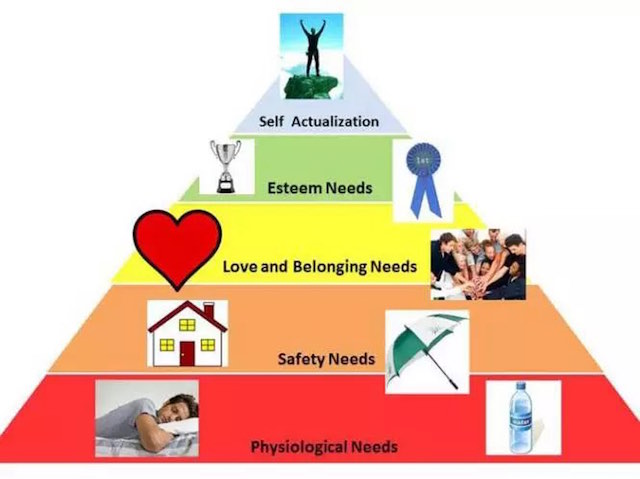
The
following
list of
needs is
neither
exhaustive
nor
definitive.
It is
meant as
a
starting
place to
support
anyone
who
wishes
to
engage
in a
process
of
deepening
self-discovery
and to
facilitate
greater
understanding
and
connection
between
people.
CONNECTION
acceptance
affection
appreciation
belonging
cooperation
communication
closeness
community
companionship
compassion
consideration
consistency
empathy
inclusion
intimacy
love
mutuality
nurturing
respect/self-respect |
CONNECTION continued
safety
security
stability
support
to know and be known
to see and be seen
to understand and
be understood
trust
warmth
PHYSICAL WELL-BEING
air
food
movement/exercise
rest/sleep
sexual expression
safety
shelter
touch
water |
HONESTY
authenticity
integrity
presencePLAY
joy
humor
PEACE
beauty
communion
ease
equality
harmony
inspiration
order
AUTONOMY
choice
freedom
independence
space
spontaneity |
MEANING
awareness
celebration of life
challenge
clarity
competence
consciousness
contribution
creativity
discovery
efficacy
effectiveness
growth
hope
learning
mourning
participation
purpose
self-expression
stimulation
to matter
understanding |
The
contents
of this
page can
be
downloaded
and
copied
by
anyone
so long
as they
credit
CNVC as
follows:
(c) 2005
by
Center
for
Nonviolent
Communication
Website:
www.cnvc.org
Email:
cnvc@cnvc.org
Additional
Resources
 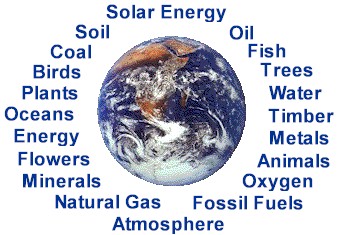

Wise Heart
LaShelle Lowe-Chardé
www.wiseheartpdx.org
Explore excellent Links & Handouts and optional articles:
FREE RESOURCES from La Shelle:
Visit her site for many excellent suggestions
and tools. She also offers workshops and ongoing support!
I went to her
day-long work shop and LOVED it!
Wikipedia
article:
http://en.wikipedia.org/wiki/Nonviolent_Communication
To explore
feelings:
http://www.cnvc.org/Training/feelings-inventory
10 steps to peace:
http://www.cnvc.org/Training/10-steps-peace
NVC model:
http://www.cnvc.org/Training/the-nvc-model
To purchase the book:
http://www.amazon.com/Nonviolent-Communication-Language-Marshall-Rosenberg/dp/1892005034
YouTube videos:
http://www.youtube.com/watch?v=-dpk5Z7GIFs
GREAT SUMMARIES!
Additional articles

| 









